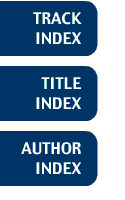
Track: Ecology, Conservation, and Archaeology
Integrated GPS and GIS Technologies for Vegetation Mapping and Classification Accuracy Assessment in Arizona

Michael R. KunzmannRoyden J. Hobbs , Peter S. Bennett, Patty Guertin - Univ of AZ. John Mangiameli - Univ of AZ.
Recently, the USGS Cooperative Park Studies Unit, located at the University of Arizona, conducted an accuracy assessment of the Arizona GAP vegetation map. Numerous GPS and GIS techniques were utilized to facilitate mission planning, data gathering, and accuracy assessment processes. Integrated field-based GPS and GIS techniques were heavily depended upon to rapidly collect ground-truthed vegetation data from a randomly selected, stratified set of target polygons that statistically represented each vegetation community class. GPS-based field mapping and monitoring techniques included the use of GIS coverages to track sampled and targeted polygons. Vegetation survey techniques included GPS-synchronized airborne videography and ground-based semiautomated GPS-GIS data collection surveys. Without the use of integrated GPS and GIS techniques the 58,169-polygon,105-community type map could not have been adequately assessed within the twelve-month study period. This paper will discuss GPS, GIS, and field technologies as well as vegetation accuracy assessment issues.
Michael R. Kunzmann
USGS Biological Resources Division
125 Biological Sciences East
Tucson, AZ 85721
USA
Telephone: (520) 621-7282
Fax: (520) 670-5001
E-mail: mrsk@sherpa.srnr.arizona.edu